AI-generated Python Plugin Guide
Document Purpose
This guide aims to help NeuronEX users, especially operations personnel or automation engineers, effectively utilize NeuronEX's integrated AI capabilities (combined with LLM models) to generate Python function plugins for complex edge data processing that is difficult to handle with NeuronEX SQL.
Following these best practices ensures that generated code is functionally correct, performs well, is easy to maintain, and fully leverages NeuronEX's potential in industrial edge computing scenarios.
Background
NeuronEX provides powerful streaming SQL processing capabilities that can meet most industrial data cleaning, transformation, aggregation, and alerting requirements at the edge.
However, when facing scenarios such as state maintenance judgments (such as continuous increment detection), complex format conversions, or specific business logic calculations, SQL's expressive capabilities are limited.
NeuronEX supports writing extension functions in languages like Python to address this limitation, but traditionally this requires users to have programming skills and handle development, debugging, and deployment processes. By integrating LLM, NeuronEX has implemented a simplified workflow of "natural language description -> AI-generated Python code -> automatic deployment -> SQL calling", greatly reducing the development barrier and improving response time.
Feature Introduction
Using AI-generated Python plugin functionality in NeuronEX mainly involves the following steps: installation, configuring AI models, using the AI function generation feature, and testing and using generated plugins in rules.
Installation
Starting from version 3.5.1, NeuronEX provides Docker image packages supporting AI functionality: neuronex:3.5.1-ai and neuronex:3.5.1-ai-amd64. The image packages have pre-installed the Python dependencies required for interacting with LLM models.
Use the following commands to download and run NeuronEX:
# Download x86 image and run container
docker pull emqx/neuronex:3.5.1-ai
docker run -d --name neuronex -p 8085:8085 --log-opt max-size=100m --privileged=true emqx/neuronex:3.5.1-ai
# Download arm64 image and run container
docker pull emqx/neuronex:3.5.1-ai-amd64
docker run -d --name neuronex -p 8085:8085 --log-opt max-size=100m --privileged=true emqx/neuronex:3.5.1-ai-amd64AI Model Configuration
Before using the AI-generated Python plugin feature, you need to add LLM model configuration information on the NeuronEX System Configuration -> AI Model Configuration page, including the LLM model type, API Key, Endpoint address, and model name. Currently, NeuronEX supports models from the following vendors:
Model Vendor | Endpoint Address | Model Name |
|---|---|---|
| DeepSeek | https://api.deepseek.com | deepseek-chat deepseek-reasoner |
| SiliconFlow | - | Pro/deepseek-ai/DeepSeek-V3 deepseek-ai/DeepSeek-V3 |
| OpenAI | https://api.openai.com/v1 | gpt-4o gpt-4.1 o1 o3-mini gpt-4.5-preview gpt-4.1-mini o4-mini |
| Azure OpenAI | Obtain from Azure official website | gpt-4o o1-mini o3-mini |
You can obtain API Keys from the official websites of these model vendors, add model configurations on the NeuronEX page, and enable them. Multiple large models can be configured on the page simultaneously, but only one model can be enabled for use.
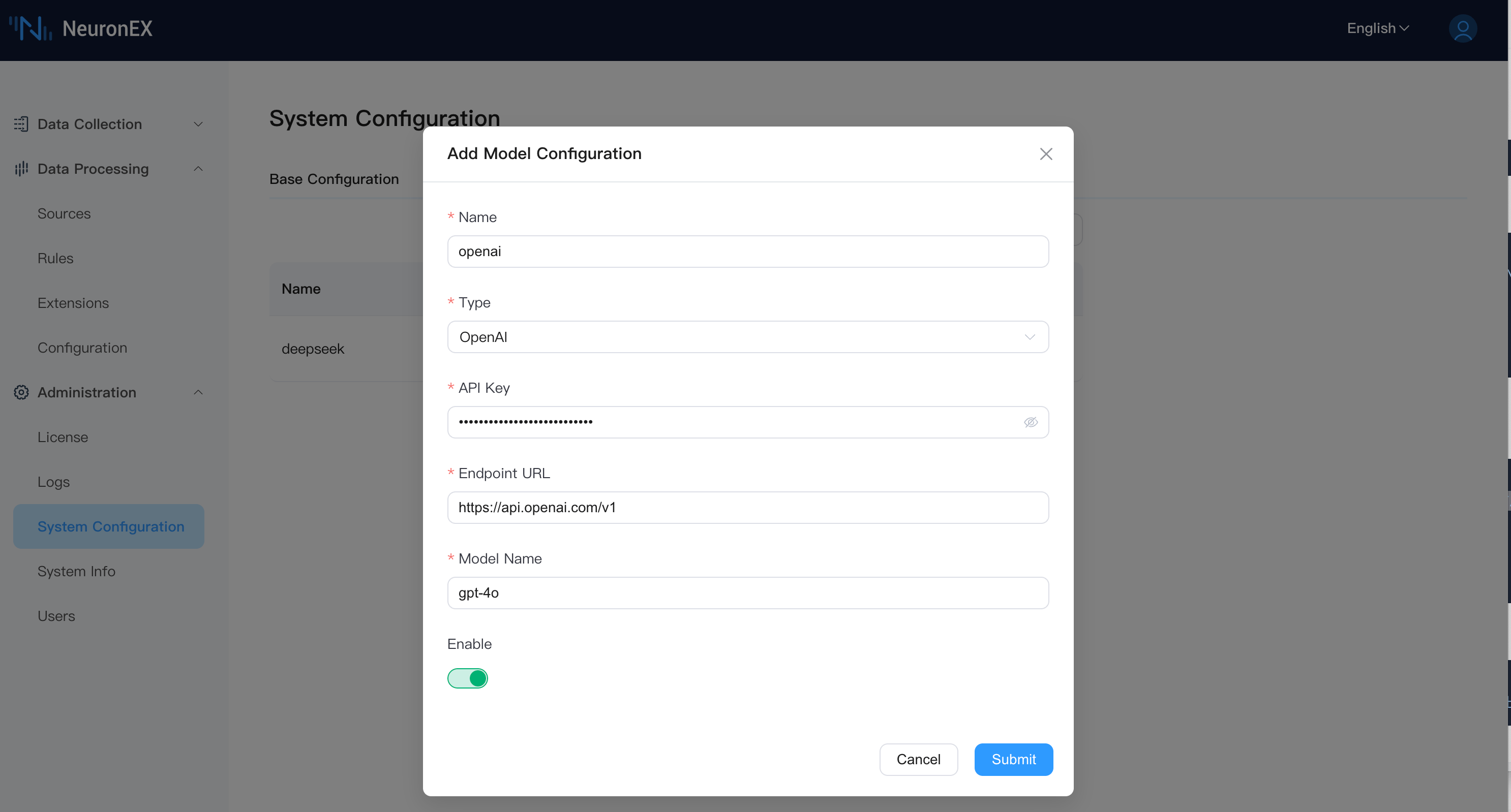
TIP
- Please ensure that NeuronEX can connect to the internet normally and access the model's API.
- Small models or excessively outdated models will affect the quality of generated Python plugins. The models in the above table are recommended, and new models released by various vendors can also be used in the future.
AI-Generated Python Plugins
After configuring the LLM model, go to the NeuronEX Data Processing -> Extensions page, click AI Generate Function to enter the AI function generation page:

On the AI function generation page, you can enter a natural language description of the Python function you want to generate. For example, for a simple mathematical operation, you can enter:
Please generate a Python function that calculates the result of subtracting two numbers a and bTo improve the accuracy of code generated by the large model, you can click the Add Input Parameter button to describe the input types, as shown below:

Click the Generate Function button, and the large model will generate Python code based on your description and display it in the AI dialog box. This process takes a few seconds, please be patient and refer to the progress bar.
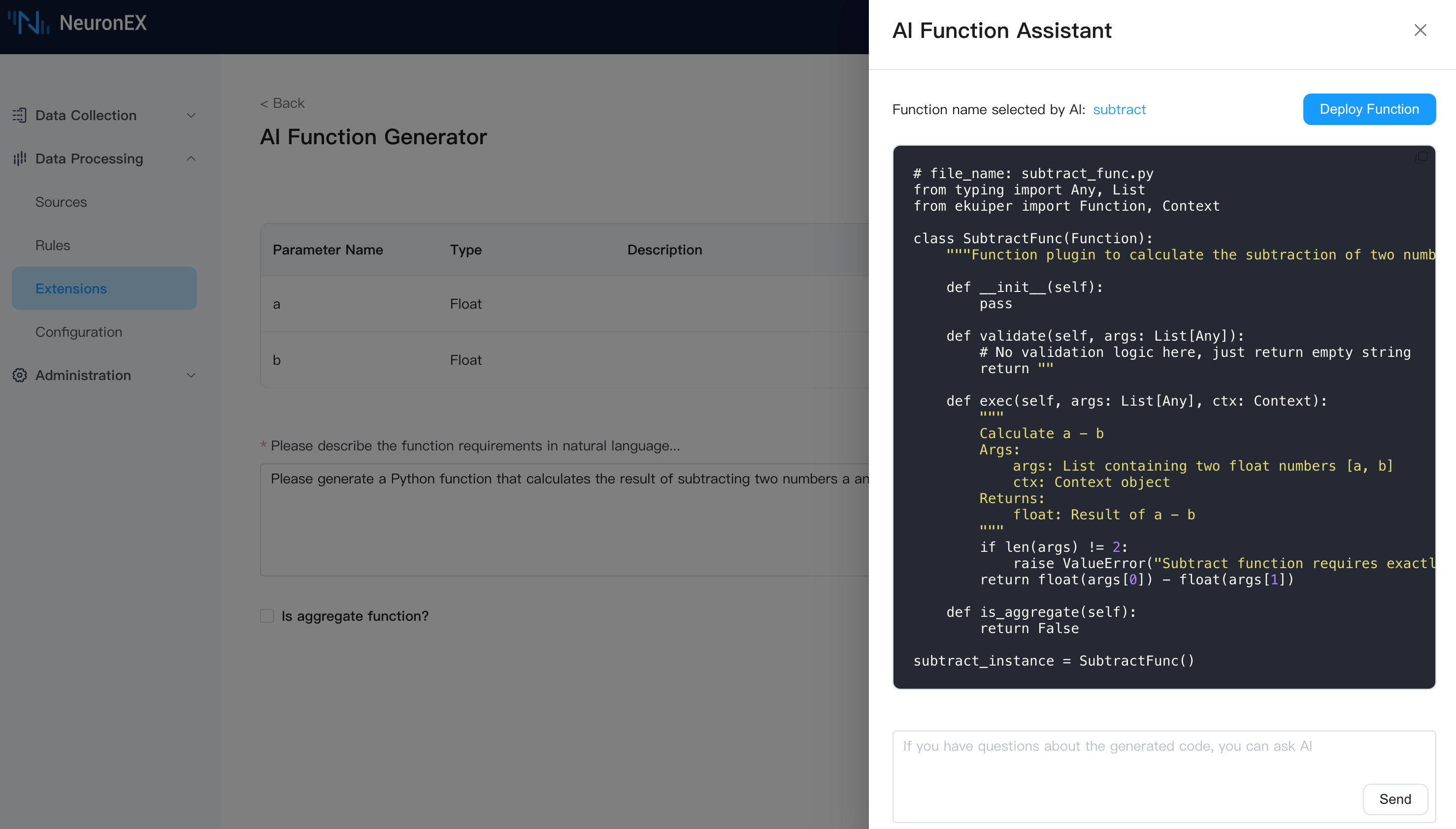
Click the Deploy Function button in the above image, and the generated Python code will be automatically deployed to NeuronEX, with a popup indicating successful deployment. If you have questions about the generated code, you can ask in the AI dialog box.
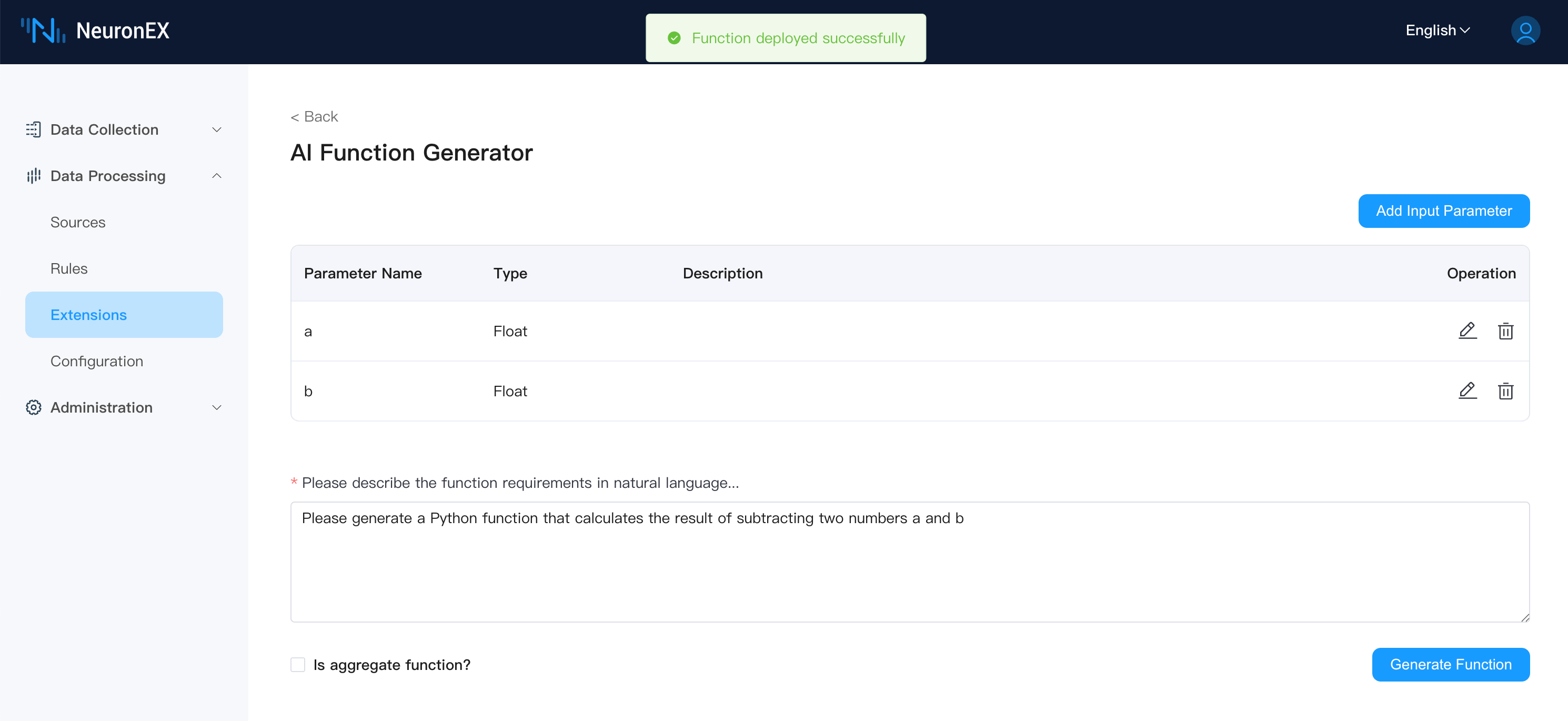
On the algorithm integration list page, you can see the currently deployed function subtract:

TIP
- Talking to AI cannot adjust the generated function code. If you are not satisfied with the generated function code, you can input and adjust the natural language again to regenerate it.
- If an AI-generated plugin has the same name as an existing plugin, the original plugin will be overwritten.
- If an AI-generated plugin has the same name as a built-in function, the built-in function takes precedence and the generated plugin becomes invalid.
For information about using the Is Aggregate Function option, please refer to SPC Increment Detection and SPC Limit Exceeding Detection.
Plugin Testing and Usage
On the Data Processing -> Rules page, click the Create Rule button to enter the new rule page, call the generated plugin in the SQL statement, and test its use.
SELECT
subtract(a, b) as result
FROM
neuronStream
Click the Simulated Data Sources button, and in the popup page, select the simulated data source in SQL as neuronStream, set the payload content as follows, and click the Save button.

Click the Run Test button to see the test results in the debug output box below.
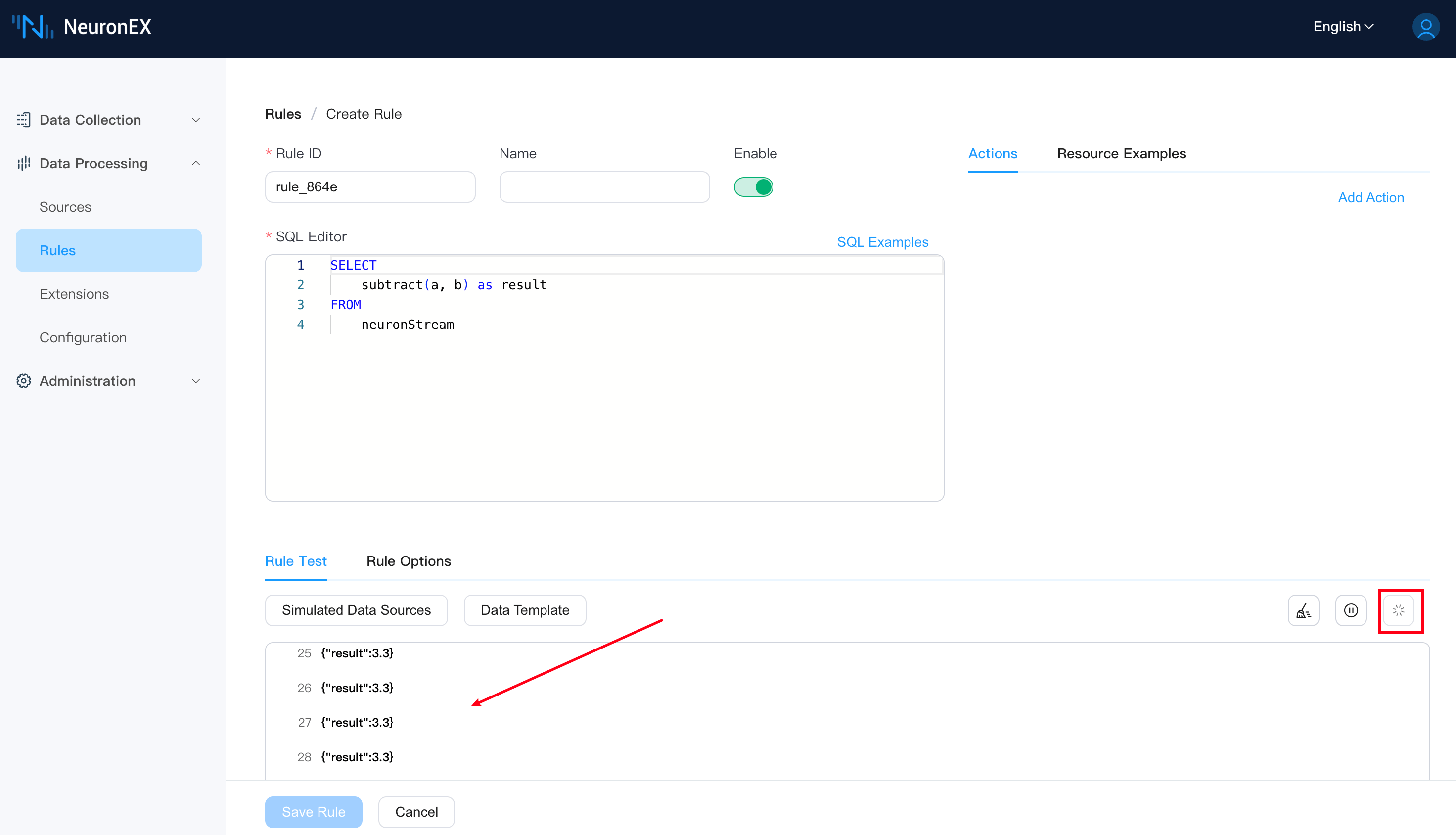
For more examples of AI-generated Python plugins in industrial scenarios, please refer to the following use cases:
Usage Examples
Data Format Conversion
Data format conversion is a common data processing requirement in industrial scenarios. The AI-generated Python plugin feature can convert data to the corresponding format according to IoT platform data format requirements. For example, converting from the original input format:
{
"timestamp": 1650006388943,
"node": "modbus",
"group": "grp",
"values": {
"tag1": 123,
"tag2": 234
}
}To the format required by the downstream IoT platform:
{
"timestamp": 1650006388943,
"node": "modbus",
"group": "grp",
"tags": [{
"name": "tag1",
"value": 123
},{
"name": "tag2",
"value": 234
}
]
}Dialog input as follows:
Generate a plugin:transform_plugin ,Implements the following functions. Converts the incoming JSON data (para1) from the original format to the target format.
## Original input format
{
"timestamp": 1650006388943,
"node": "modbus",
"group": "grp",
"values": {
"tag1": 123,
"tag2": 234
}
}
## target output format
{
"timestamp": 1650006388943,
"node": "modbus",
"group": "grp",
"tags": [{
"name": "tag1",
"value": 123
},{
"name": "tag2",
"value": 234
}
]
}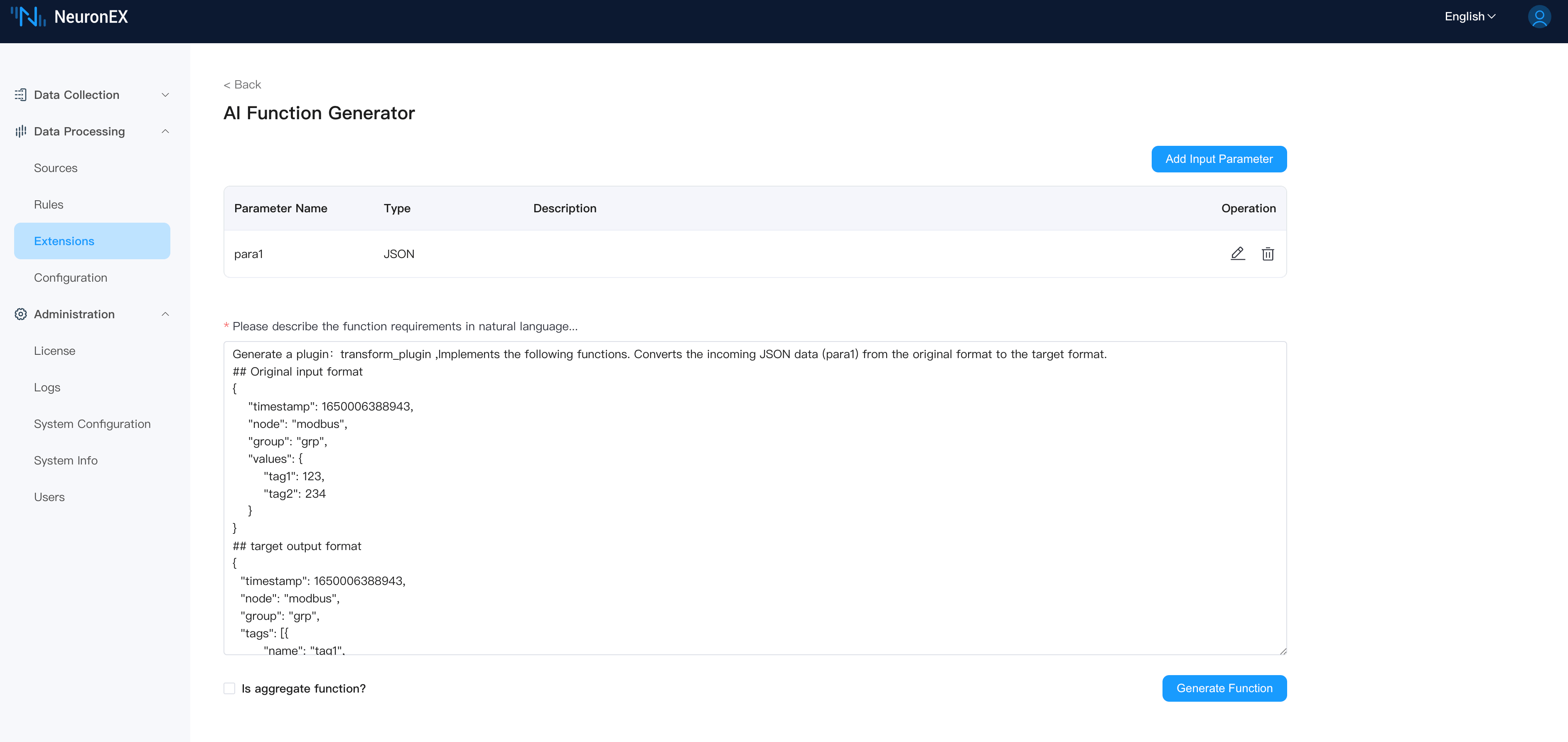
Function generation:
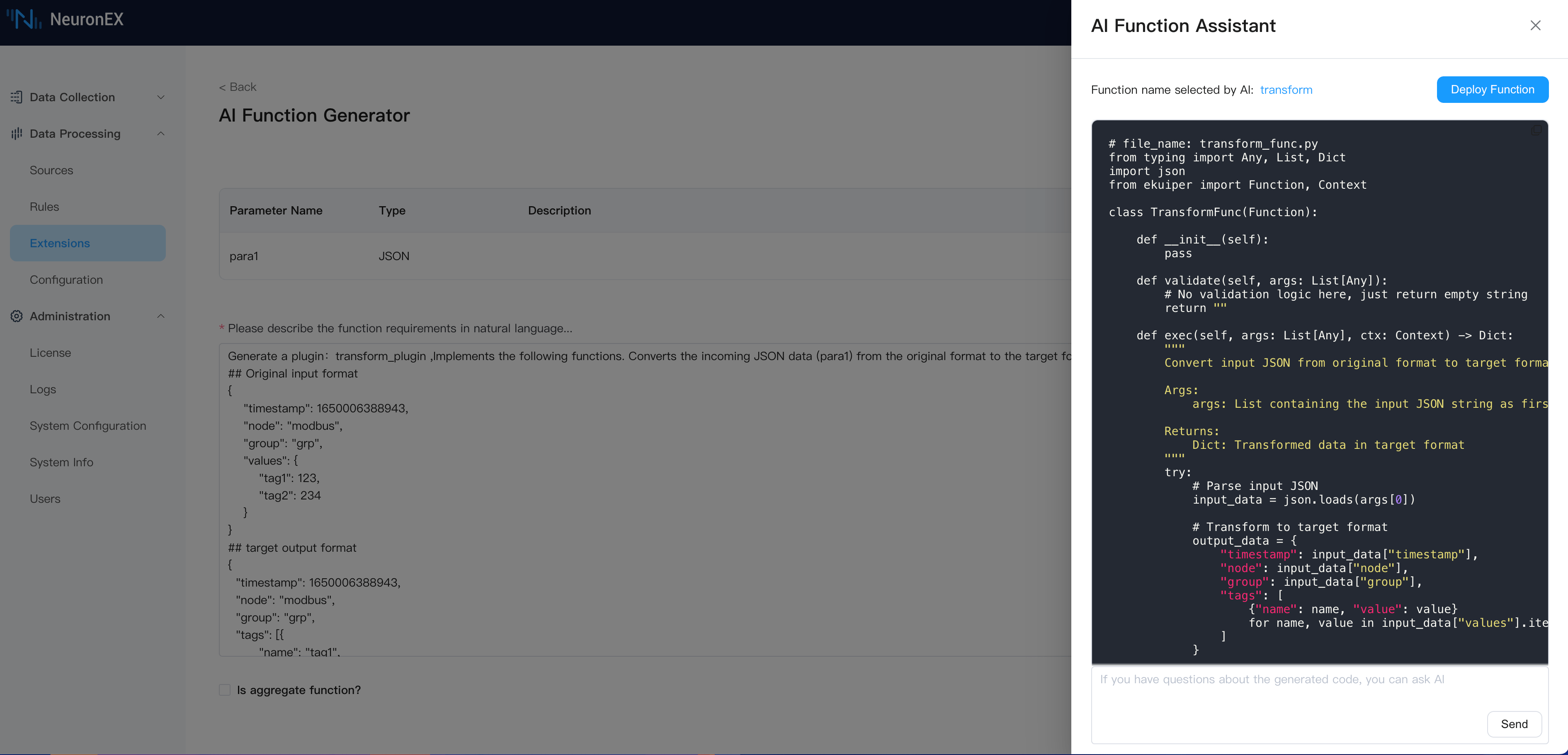

Calling in rules:
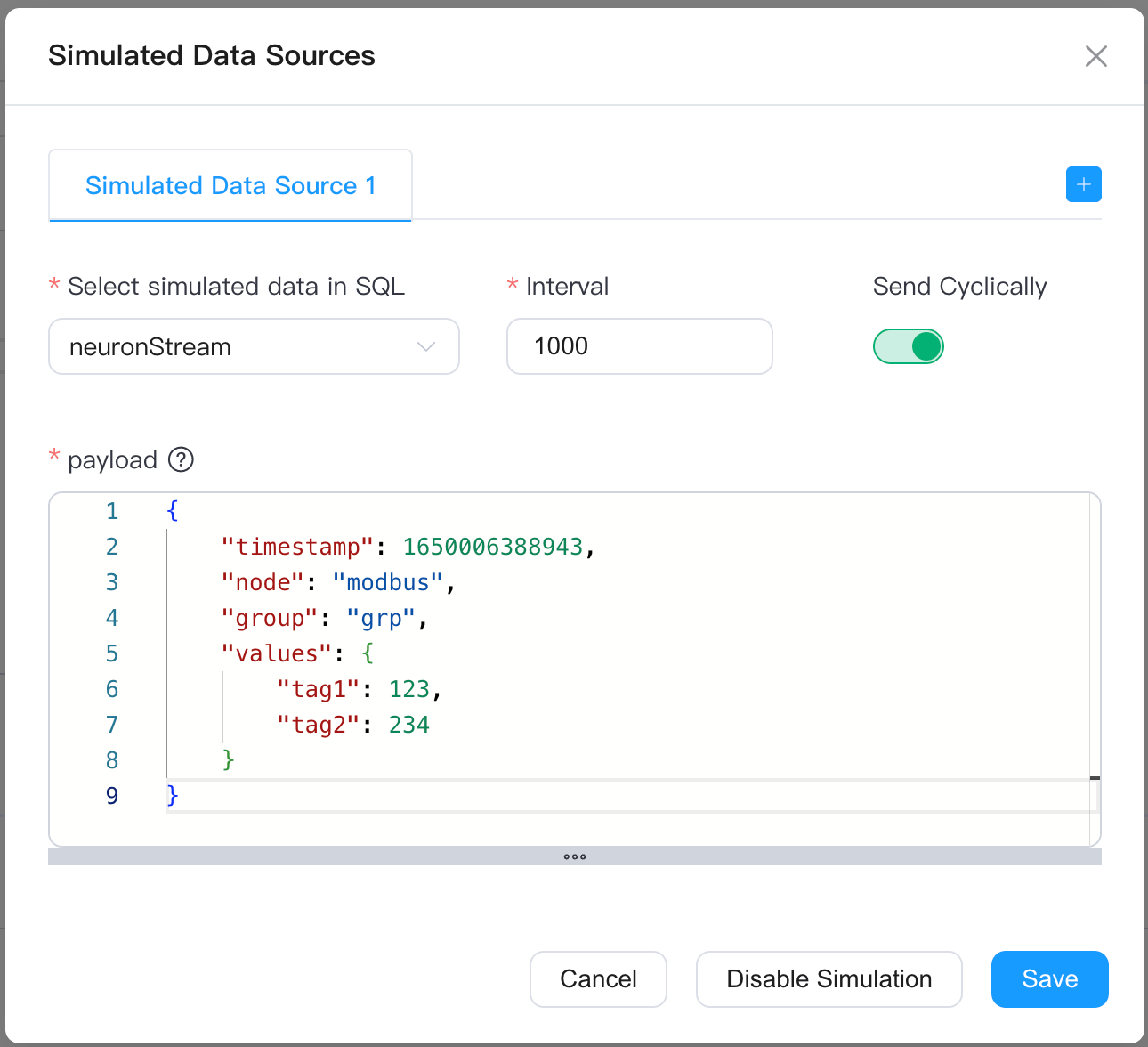
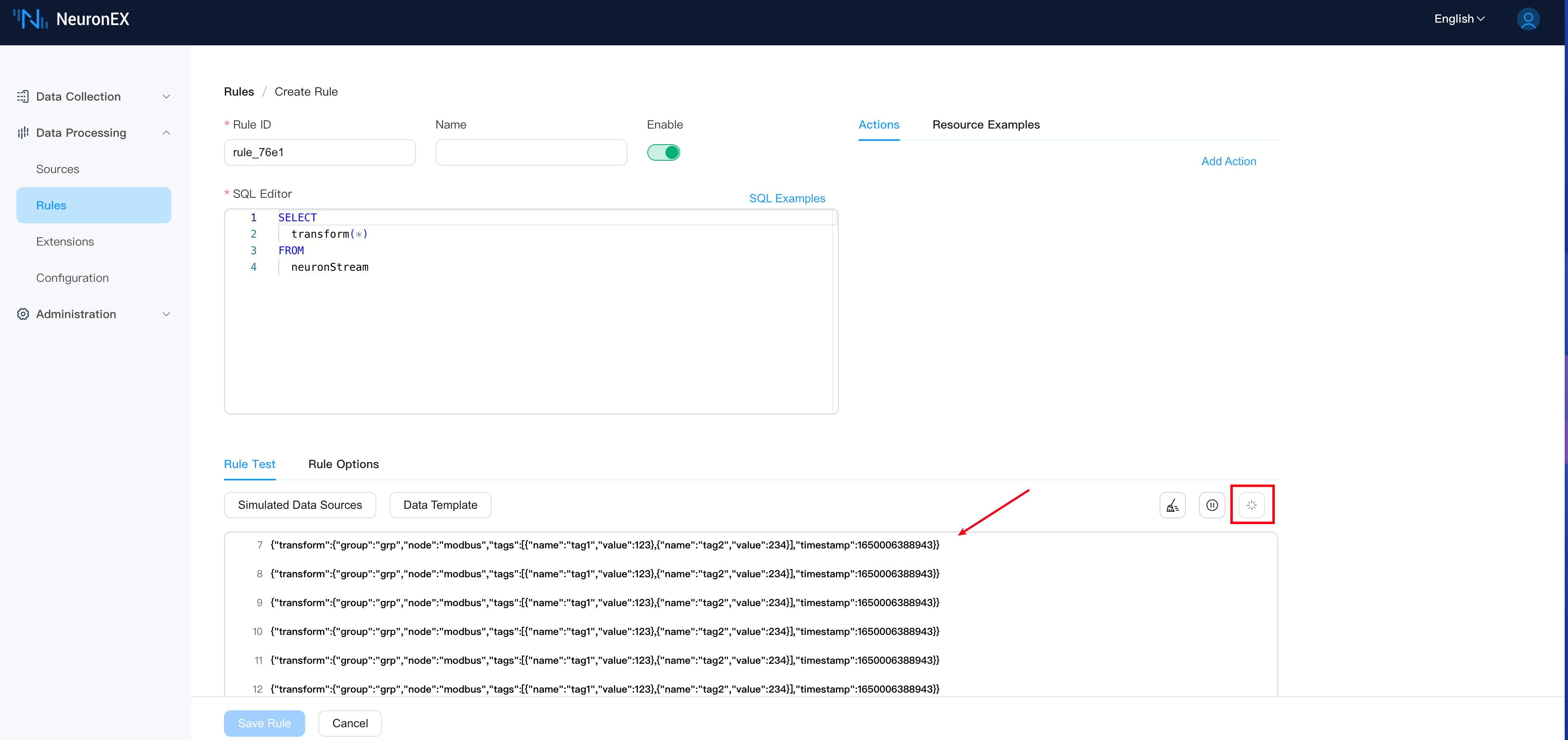
SPC Increment Detection
SPC (Statistical Process Control) is a common data processing requirement in industrial scenarios. The AI-generated Python plugin feature can generate corresponding aggregate functions according to SPC rule requirements.
For example, creating an plugin agg_spc_plugin that outputs an alert message {"alarm":"spc_error"} if the data in the array is monotonically increasing, otherwise outputs the received input content.
Dialog input as follows:
Generate a plugin:agg_spc_plugin,Implements the following functions. If the data in the array is monotonically increasing, output an alert message {"alarm":"spc_error"}, otherwise output the received input content.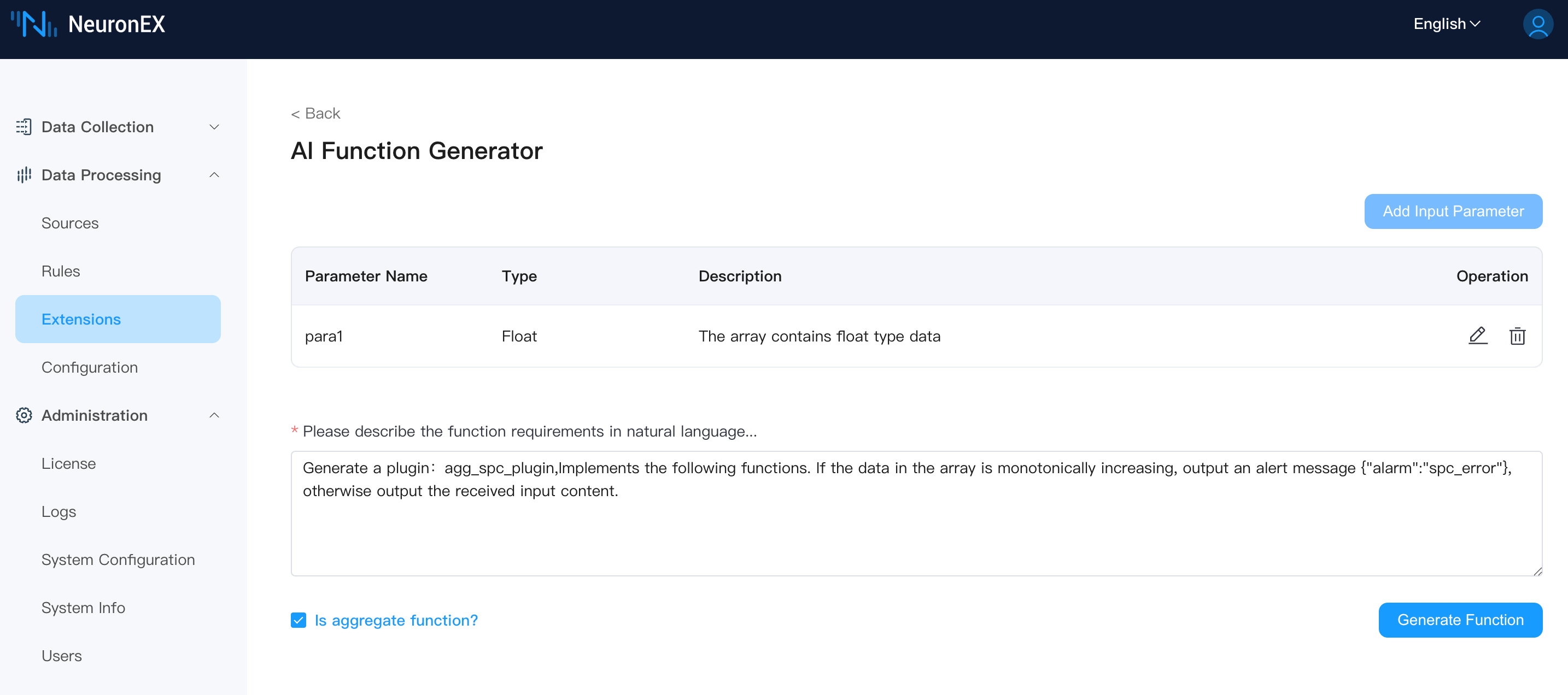
TIP
Note that you need to check the Is Aggregate Function option.
Function generation:
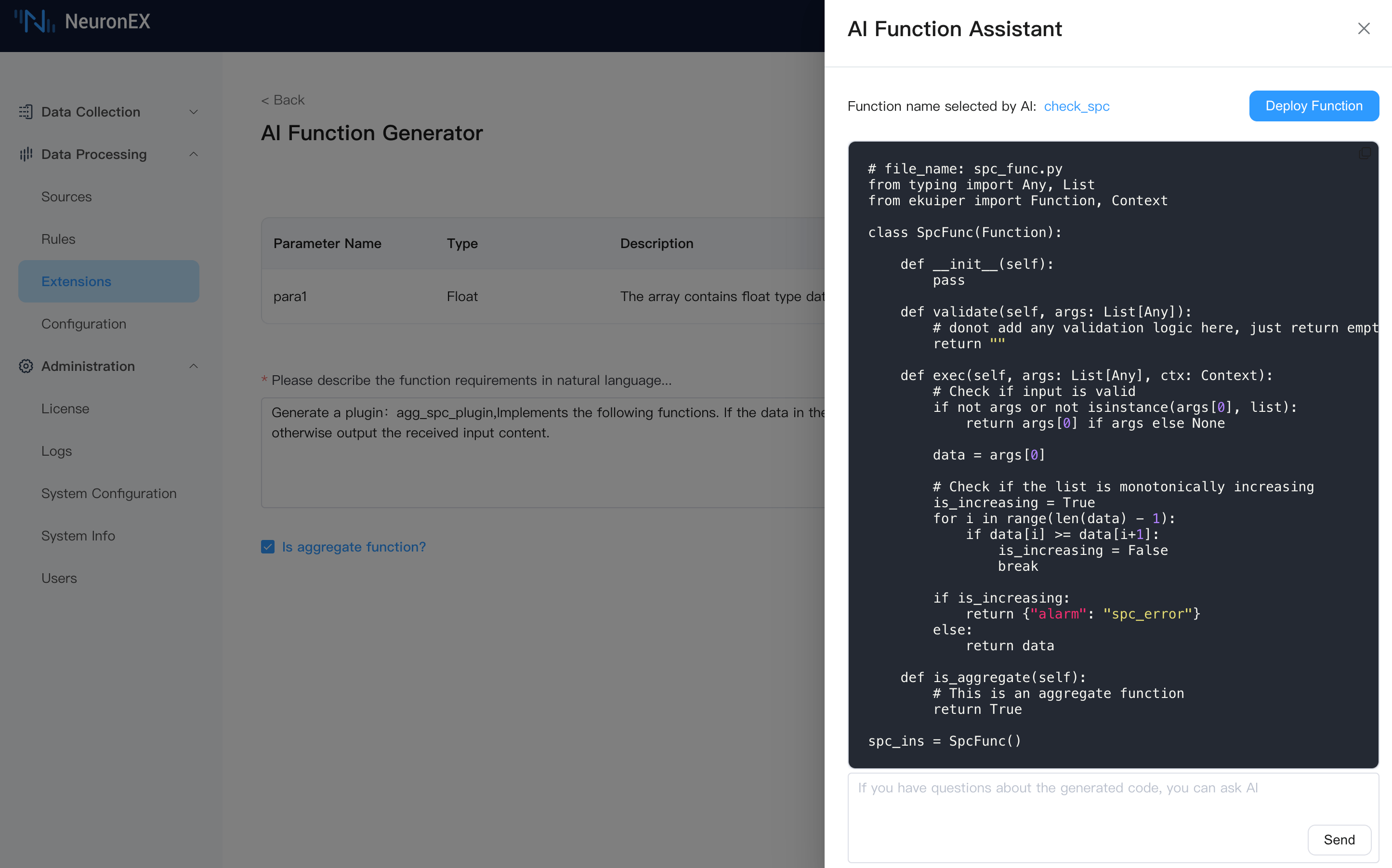
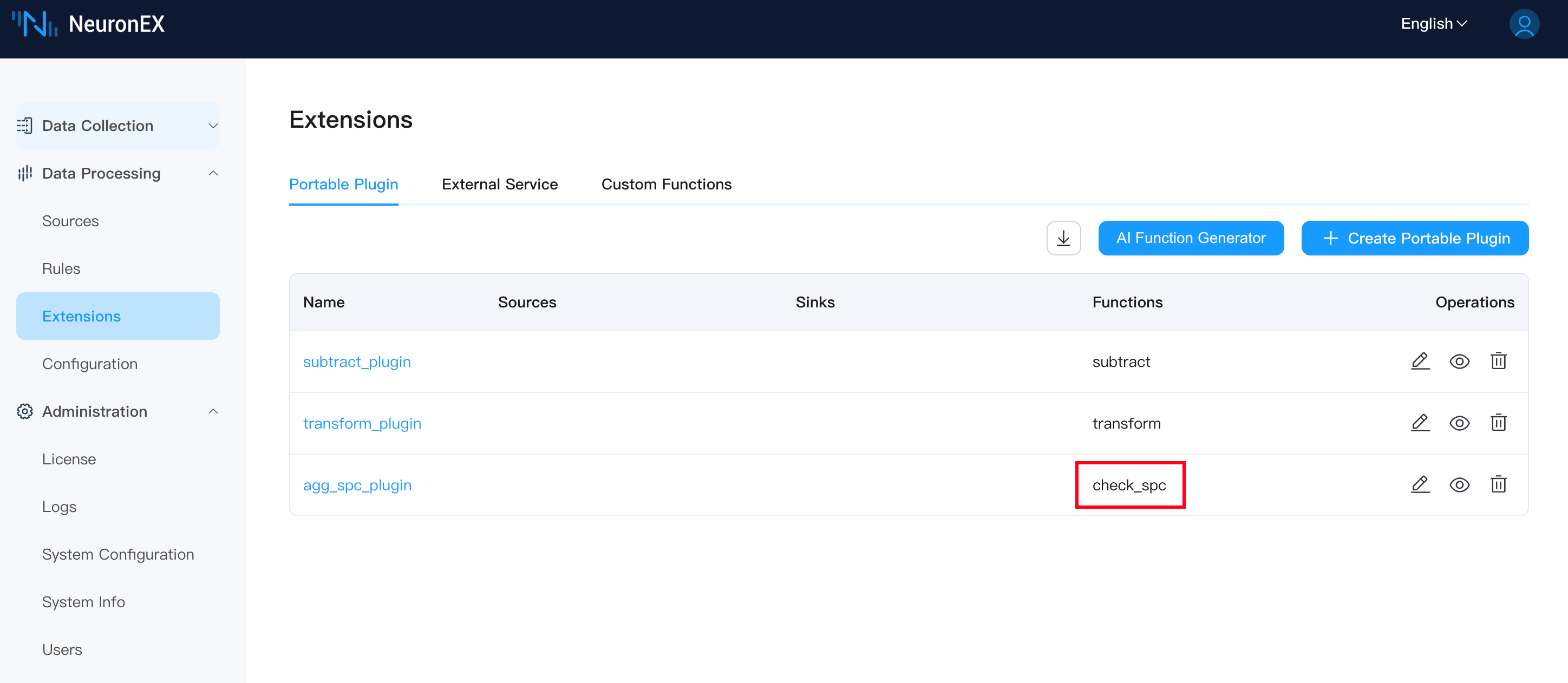
Calling in rules:
In the simulated data source, we set up an array that cyclically increases from 1.1 to 1.5.
{"a":1.1}
{"a":1.2}
{"a":1.3}
{"a":1.4}
{"a":1.5}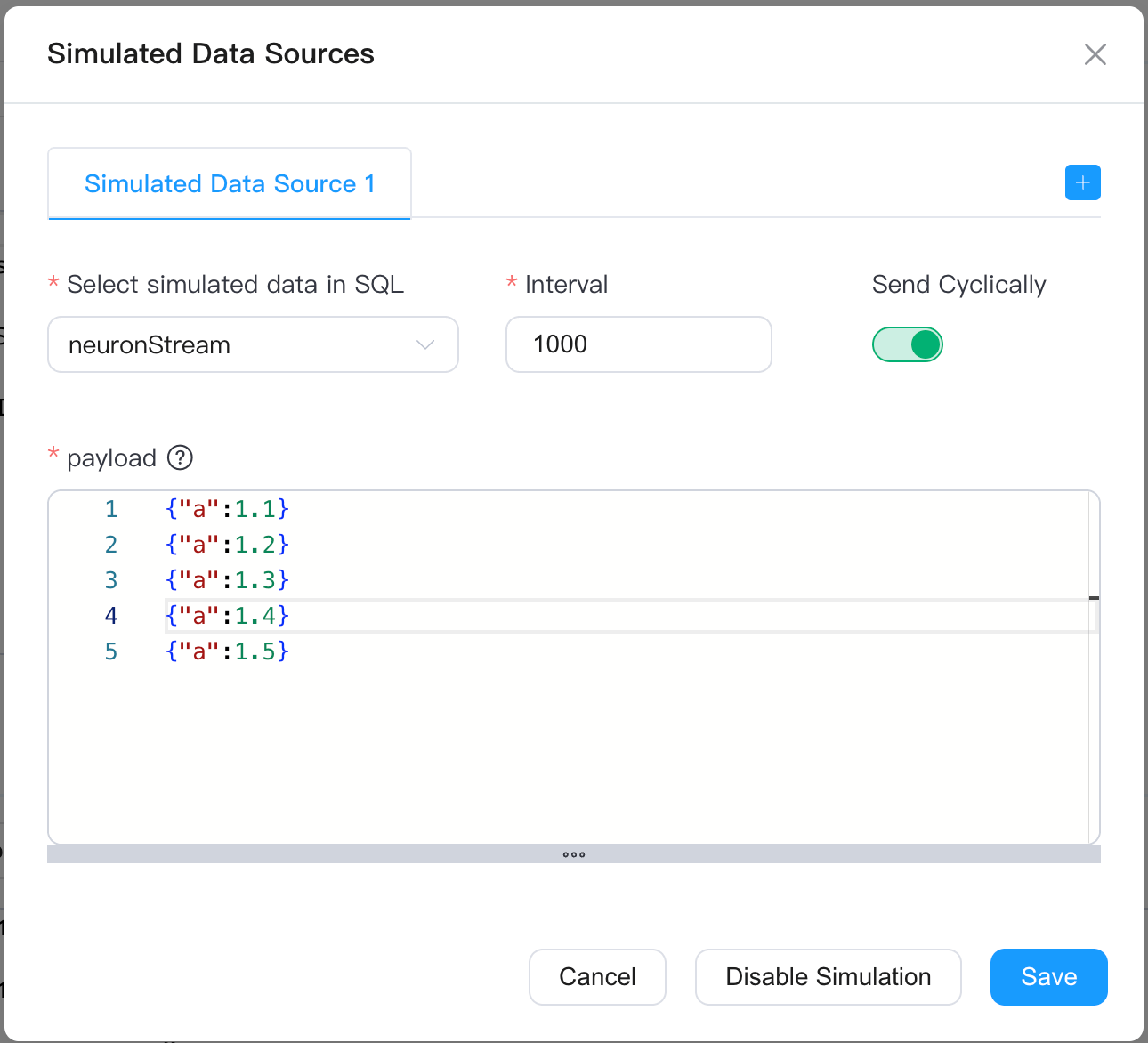
In SQL, we used a HOPPINGWINDOW with a window size of 5 and a step size of 1.
The figure below shows the output results. Since the array is monotonically increasing, when the agg_spc function receives input [1.1,1.2,1.3,1.4,1.5], it will output the alert message {"alarm":"spc_error"}, otherwise it will output the received input content.
SELECT
check_spc(a) as result
FROM
neuronStream
group by
HOPPINGWINDOW(ss, 5, 1)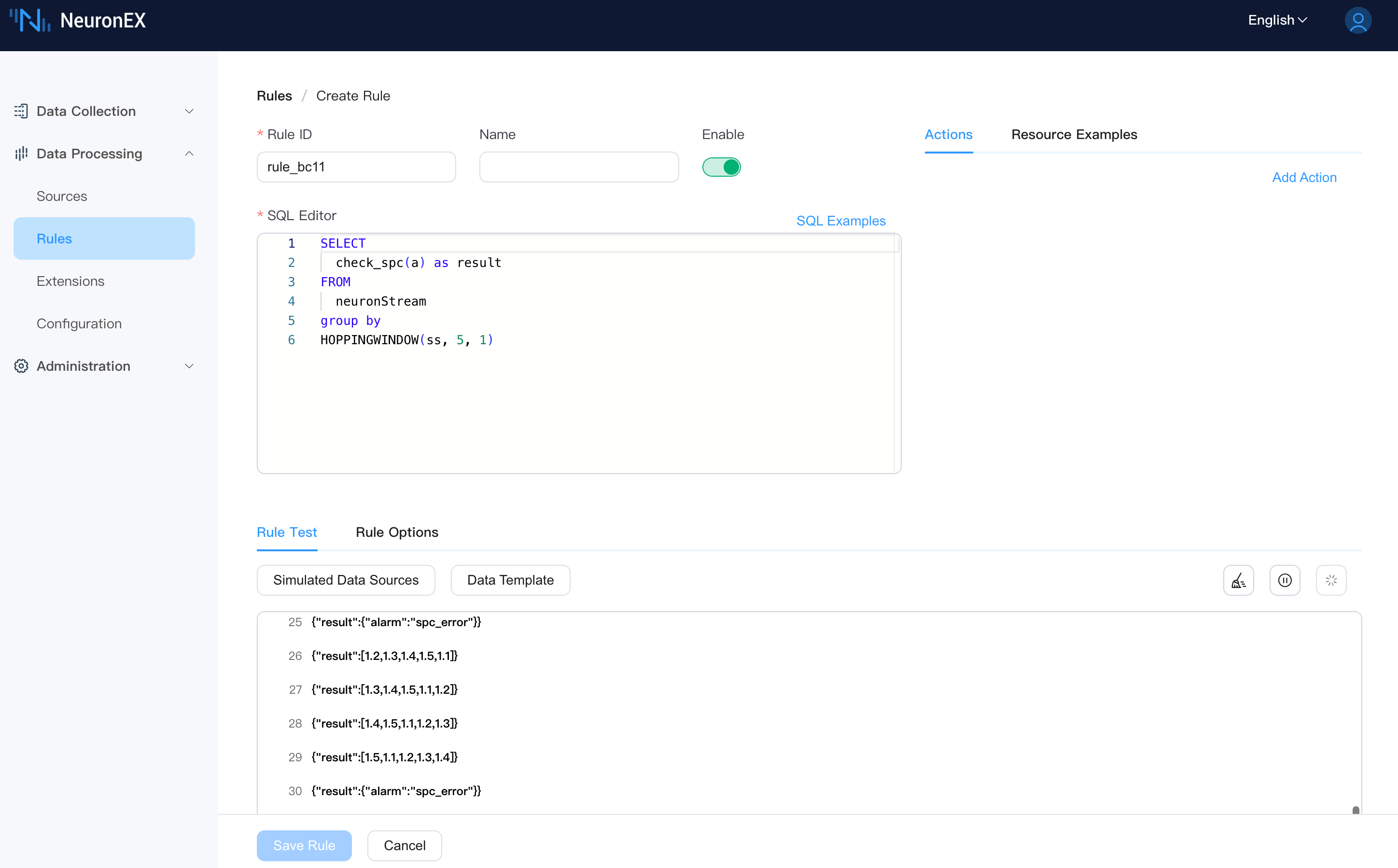
SPC Limit Exceeding Detection
SPC (Statistical Process Control) is a common data processing requirement in industrial scenarios. The AI-generated Python plugin feature can generate corresponding aggregate functions according to SPC rule requirements.
For example, creating an plugin agg_spc2_plugin that outputs an alert message {"alarm":"spc_error"} if there are more than 3 values in the array less than 1.0, otherwise outputs the received input content.
Dialog input as follows:
Generate a plugin:agg_spc2_plugin,Implements the following functions. If there are more than 3 values in the array less than 1.0, output an alert message {"alarm":"spc_error"}, otherwise output the received input content.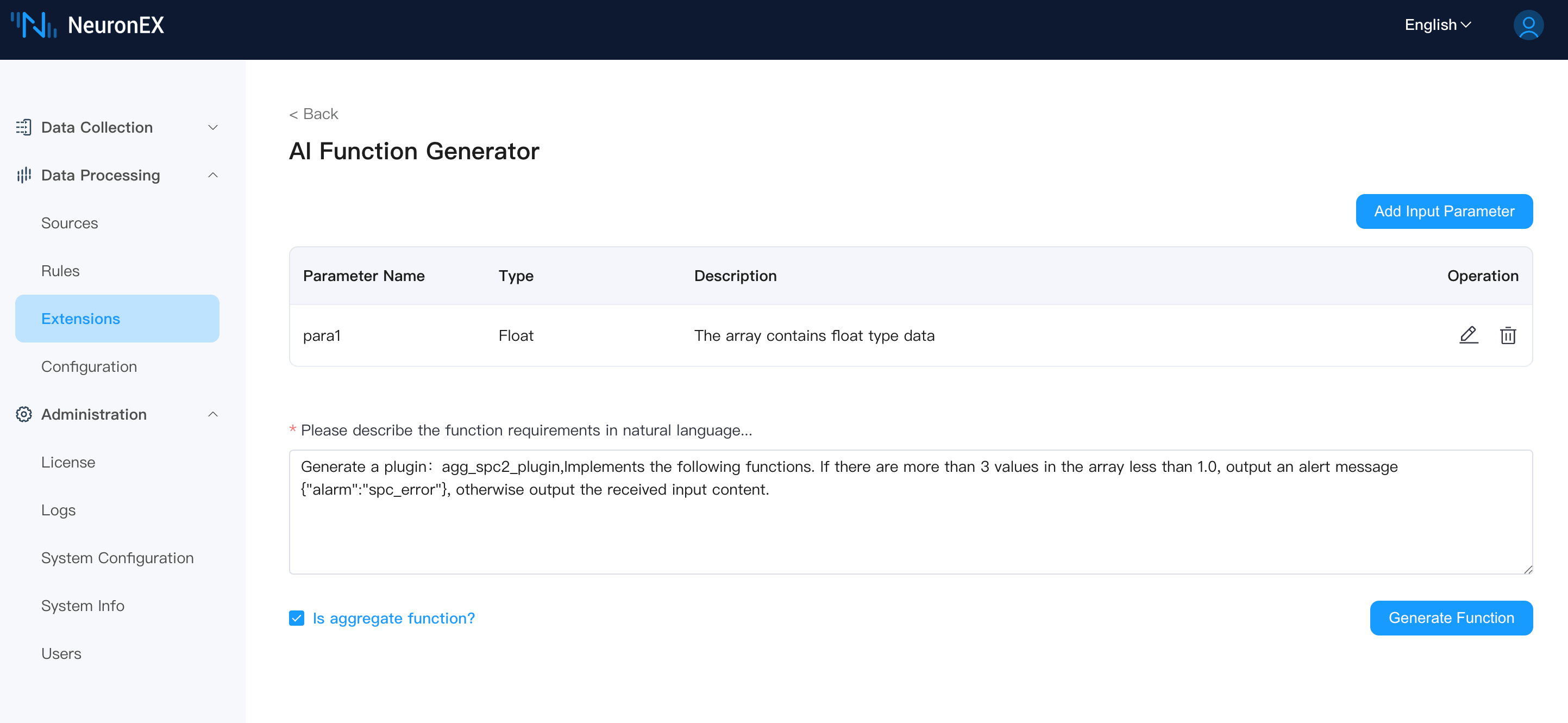
Function generation:
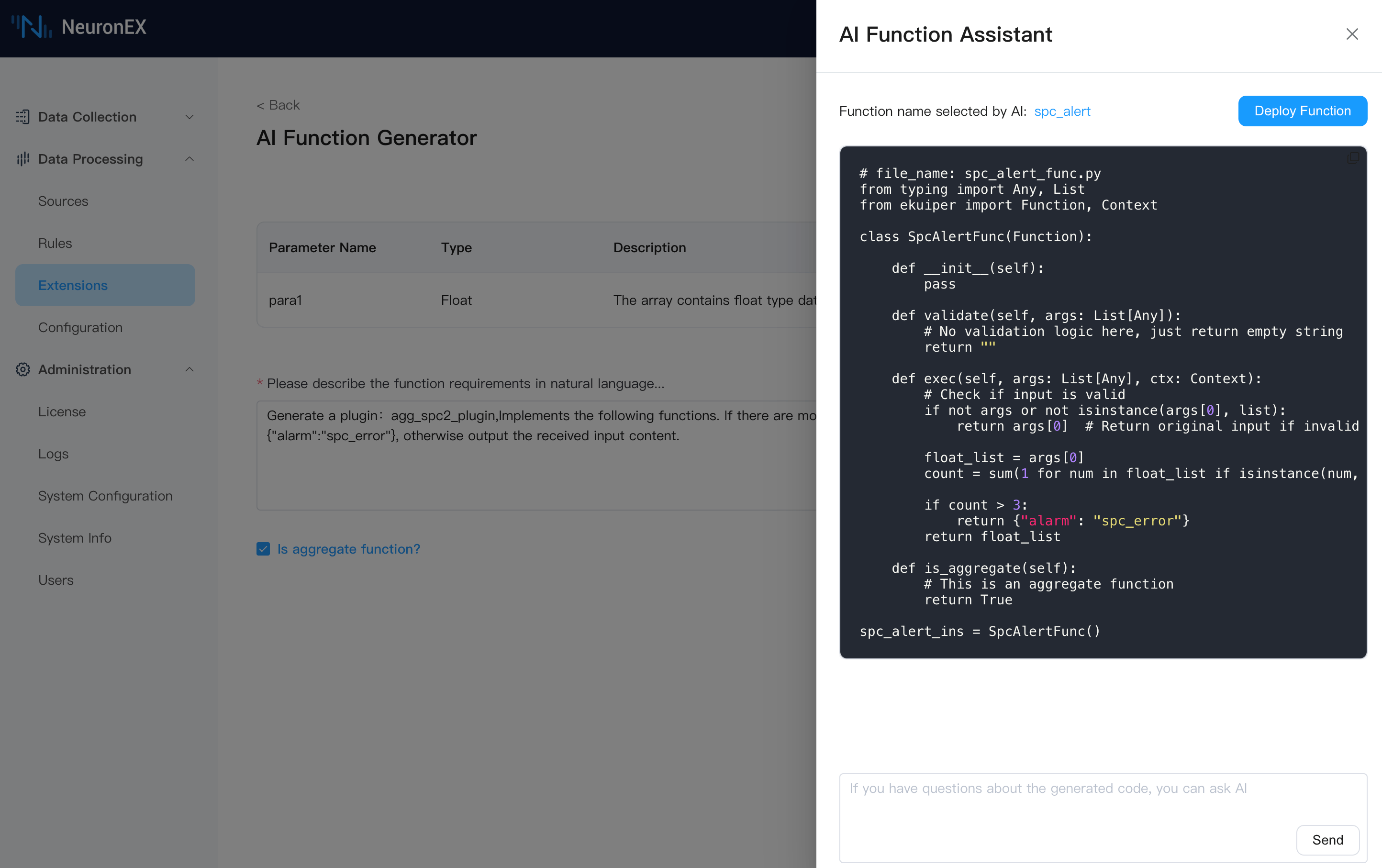
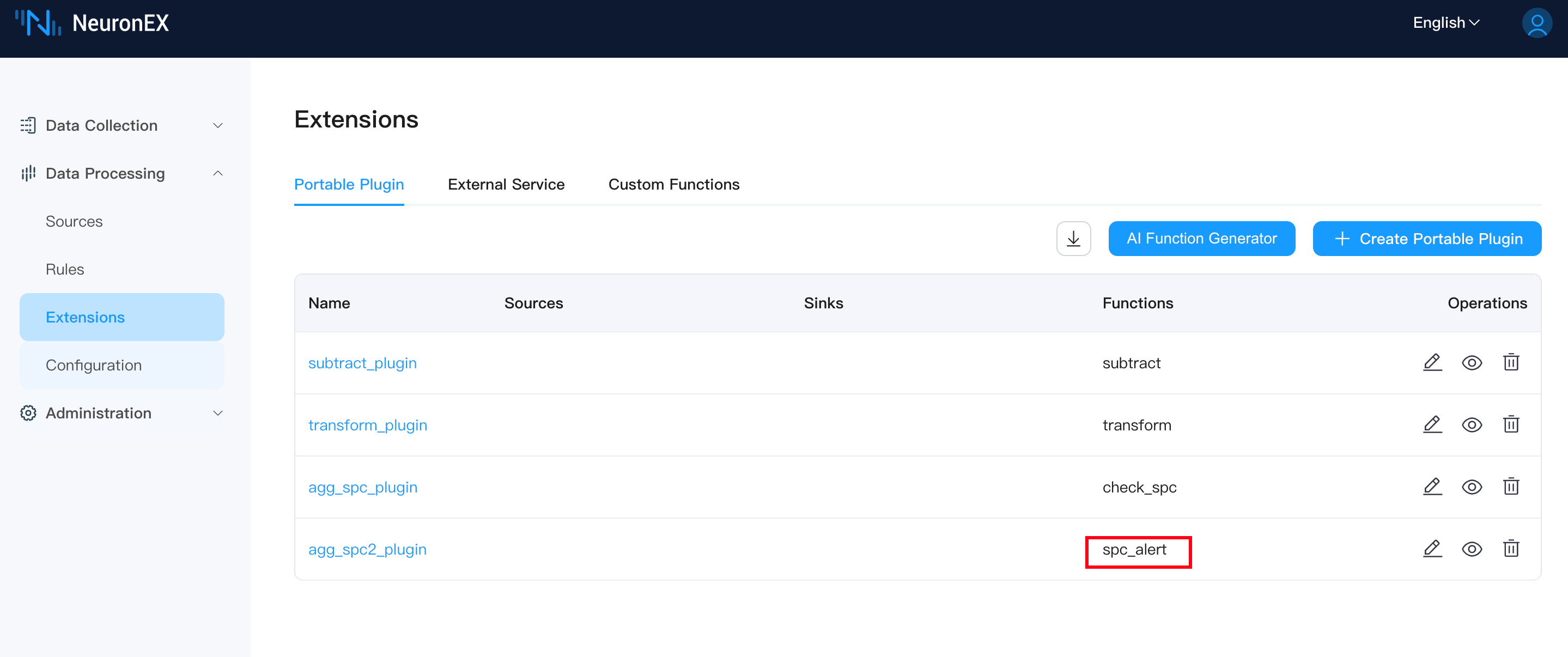
Calling in rules:
In the simulated data source, we set up json data that includes more than 3 values less than 1.0.
{"a":0.2}
{"a":0.2}
{"a":0.2}
{"a":0.2}
{"a":8.8}
{"a":8.8}
{"a":8.8}
{"a":8.8}
{"a":8.8}
{"a":8.8}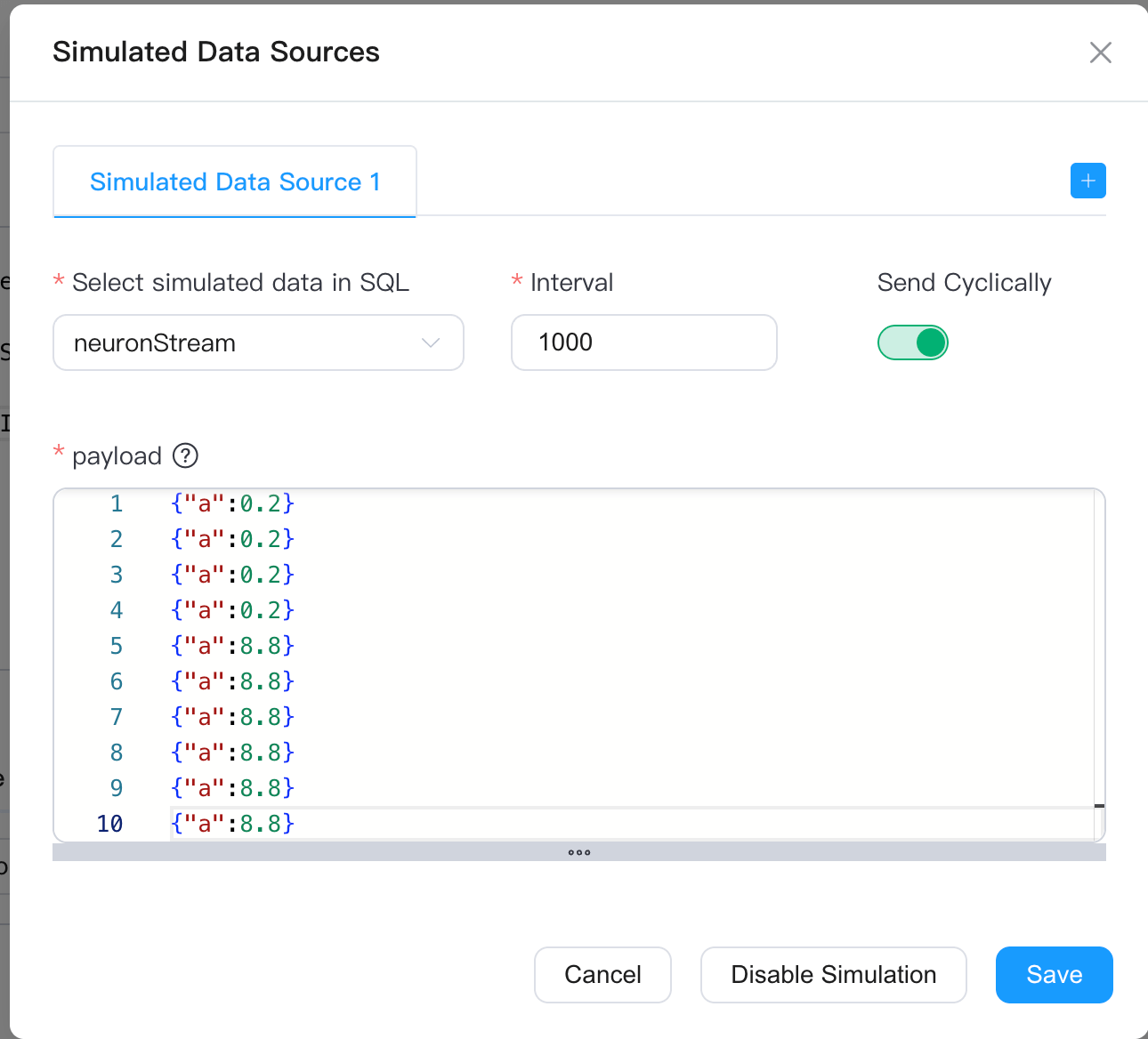
SELECT
spc_alert(a) as result
FROM
neuronStream
group by
HOPPINGWINDOW(ss, 10, 5)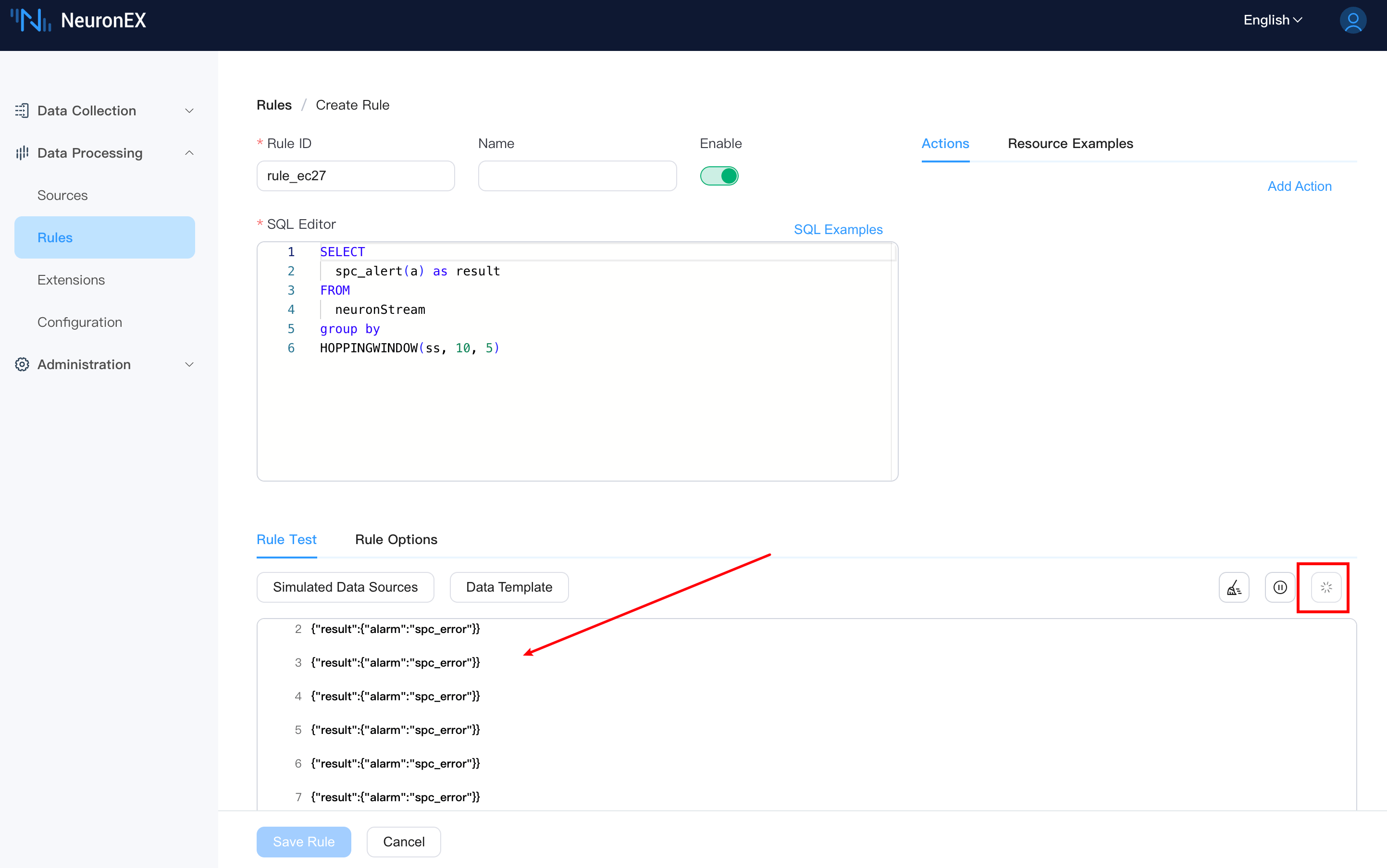
Summary
Through the above examples, we can see that the AI-generated Python plugin feature can quickly generate Python functions that meet specific requirements and automatically deploy them to NeuronEX for easy calling in rules.
You can refer to the above examples and combine them with actual business requirements to generate corresponding Python functions.